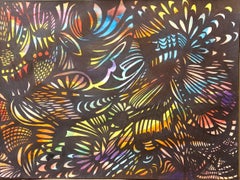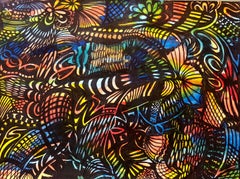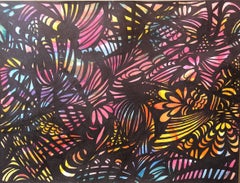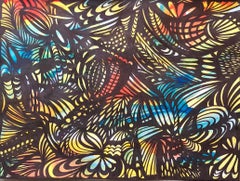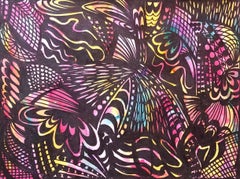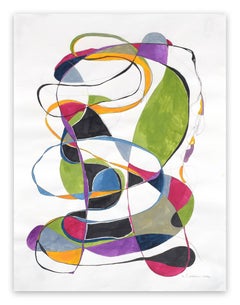Dorothy Gillespie Abstract Drawings and Watercolors
Early 2000s Abstract Expressionist Dorothy Gillespie Abstract Drawings and Watercolors
Paper, Ink, Watercolor, Permanent Marker
Early 2000s Abstract Expressionist Dorothy Gillespie Abstract Drawings and Watercolors
Paper, Ink, Watercolor, Permanent Marker
Early 2000s Abstract Expressionist Dorothy Gillespie Abstract Drawings and Watercolors
Paper, Ink, Watercolor, Permanent Marker
Early 2000s Abstract Expressionist Dorothy Gillespie Abstract Drawings and Watercolors
Paper, Ink, Watercolor, Permanent Marker
Early 2000s Abstract Expressionist Dorothy Gillespie Abstract Drawings and Watercolors
Paper, Ink, Watercolor, Permanent Marker
2010s Abstract Expressionist Dorothy Gillespie Abstract Drawings and Watercolors
Paper, Ink, Gouache, Graphite
1980s Abstract Expressionist Dorothy Gillespie Abstract Drawings and Watercolors
Permanent Marker
2010s Abstract Expressionist Dorothy Gillespie Abstract Drawings and Watercolors
Paint, Conté, Paper, Oil Pastel, Acrylic, Permanent Marker, Tempera, Wat...
2010s Abstract Expressionist Dorothy Gillespie Abstract Drawings and Watercolors
Paper, Ink, Gouache, Graphite
2010s Abstract Dorothy Gillespie Abstract Drawings and Watercolors
Paper, Acrylic, Watercolor, Permanent Marker, Color
2010s Abstract Dorothy Gillespie Abstract Drawings and Watercolors
Paper, Acrylic, Watercolor, Permanent Marker, Color
1940s Abstract Expressionist Dorothy Gillespie Abstract Drawings and Watercolors
Paper, Ink, Pen
1970s Abstract Expressionist Dorothy Gillespie Abstract Drawings and Watercolors
Paper, Ink, Watercolor
2010s Abstract Dorothy Gillespie Abstract Drawings and Watercolors
Paper, Acrylic, Permanent Marker, India Ink
1980s Abstract Expressionist Dorothy Gillespie Abstract Drawings and Watercolors
Permanent Marker, Pencil
2010s Abstract Expressionist Dorothy Gillespie Abstract Drawings and Watercolors
Paper, Ink, Gouache, Graphite
21st Century and Contemporary Abstract Expressionist Dorothy Gillespie Abstract Drawings and Watercolors
Paper, Ink, Watercolor
Early 2000s Abstract Expressionist Dorothy Gillespie Abstract Drawings and Watercolors
Paper, Ink, Watercolor, Permanent Marker
Early 2000s Abstract Expressionist Dorothy Gillespie Abstract Drawings and Watercolors
Paper, Ink, Watercolor, Permanent Marker
Early 2000s Abstract Expressionist Dorothy Gillespie Abstract Drawings and Watercolors
Paper, Ink, Watercolor, Permanent Marker
Early 2000s Abstract Expressionist Dorothy Gillespie Abstract Drawings and Watercolors
Paper, Ink, Watercolor, Permanent Marker
Early 2000s Abstract Expressionist Dorothy Gillespie Abstract Drawings and Watercolors
Paper, Ink, Watercolor, Permanent Marker
